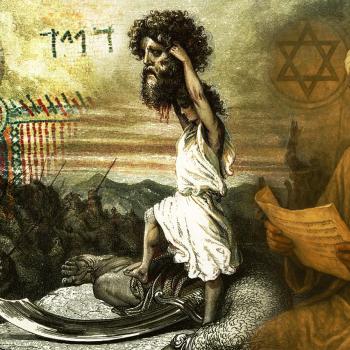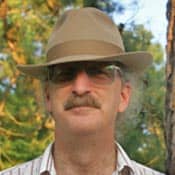I spent four days last week at UCLA attending a conference on Norse mythology. The High Powers of academia from all over the world were in attendance. It was interesting to meet the people behind the names on the spines of many of the books on my shelf, and then to meet many others, too. Rudolf Simek is a really fun guy, and Merrill Kaplan is positively captivating.
Keep in mind: these people are professors. They study the myths, and the language, culture, and religion associated with them. And somebody pays them to do it! None of the people on the program appear to actually be Heathen: they just like to read about historical Heathenry in the original documents.
It was, to put it plainly, nothing like Pantheacon.
Still, there was much of interest to modern Heathens, and several beside myself were in attendance. Here are some of the talks that interested me:
Jens Peter Schjodt from Aarhus University talked about the Aesir/Vanir distinction, based on Simek's claim that there isn't any. His conclusion was that, if you take Snorri Sturluson's writings out of the picture, as Simek prefers to do, the distinctions are still present, but much more subtle. If we didn't have this convenient term Vanir, we'd have to invent another one that we'd use in the same way. Dr. Simek was in the audience, and he disagrees. I side with Dr. Schjodt.
Rudolf Simek from the University of Bonn talked about what we know about the historical Heathen sanctuaries at Uppsala and Lejre, and how the authors of the source documents could claim to know it. This was an exercise in historical face-scrubbing, bringing Thietmar of Merseburg's and Adam of Bremen's likely biases into plain view. Along with being a fun guy, Dr. Simek was one of few presenters at the conference who didn't get up and simply read his paper to us face down from the lectern. Other professors in this business might take a hint.
Stefan Brink from the University of Aberdeen talked about Toponymics, which is the study of place names. This is an old field that fell out of favor decades ago, and Dr. Brink is bringing it back into focus. Of particular interest to me were his maps populated by dots indicating place names relating to Thor, Odin, Tyr, Frey, and Freya. If you've ever wondered about the minor role given to Tyr among the Reginn of Asgard in the mythology we have, these maps give you a clue: place names devoted to him are found almost exclusively in Denmark. His cultural influence seems to have stopped at the continental waterline.
Anders Andren from Stockholm University went into the details of Star-Oddi's Dream, an Icelandic saga about events on the island of Gotland, as an example of how myth and legend interact with history. As a personal aside: if this topic interests you, look for the book When They Severed Earth From Sky by Barber & Barber.
Stephen Mitchell from Harvard talked about what he called "love charms" in the literature, and the Old Norse verb serdha, which brought a particular four letter word into lively discussion.
Terry Gunnell from the University of Iceland talked about two colorful magical practices found in the saga literature Magical Mooning and the Goat Skin Twirl. Dr. Gunnell is originally from England and has a background in theater. He was the only presenter to perform Old Norse poetry for its poetic effect, which has amazing power even if you don't know the language. And if you ever have an opportunity to invite Terry to a party, I suggest that you do.
Lars Lonnroth from Gothenburg University told us about Yngvars saga vidhforla, which is a story about an expedition that is known to have left Sweden in the 1000s, heading east. Both the expedition and the saga then wander off any known map, visiting a pastiche of places populated, one may suppose, by an oddly informed imagination. If the history of literary forms interests you, this is an interesting data point.
Jonas Wellendorf from UC Berkeley examined an idea that is first found in Snorri's Gylfaginning, and then resurfaced later: that the Aesir were somehow involved in the Trojan War. Dr. Wellendorf told us about Jonas Ramus, who wrote in the early 1700s, claiming that Odysseus was actually Odin. This was an entertaining tour of academic fancy that has been largely forgotten, and with good reason, it seems.
Thomas Dubois from the University of Wisconsin and Gisli Sigurdsson from the University of Iceland both spoke on the topic of cultural astronomical lore. Dr. Dubois compared Sami, Finnish, and Scandinavian understandings of the sky. Much of his talk speculated on the patterns often found on Sami ritual drumheads. Dr. Sigurdsson claimed that Snorri's Edda is a mythic description of a tour of the sky. I found his description of astronomical architecture especially interesting: the gods and heroic figures dominate the dome of the sky, while the monstrous figures rise briefly above the horizon and then descend again, having been beaten back into ignominious regions and safely away from Midgard.





